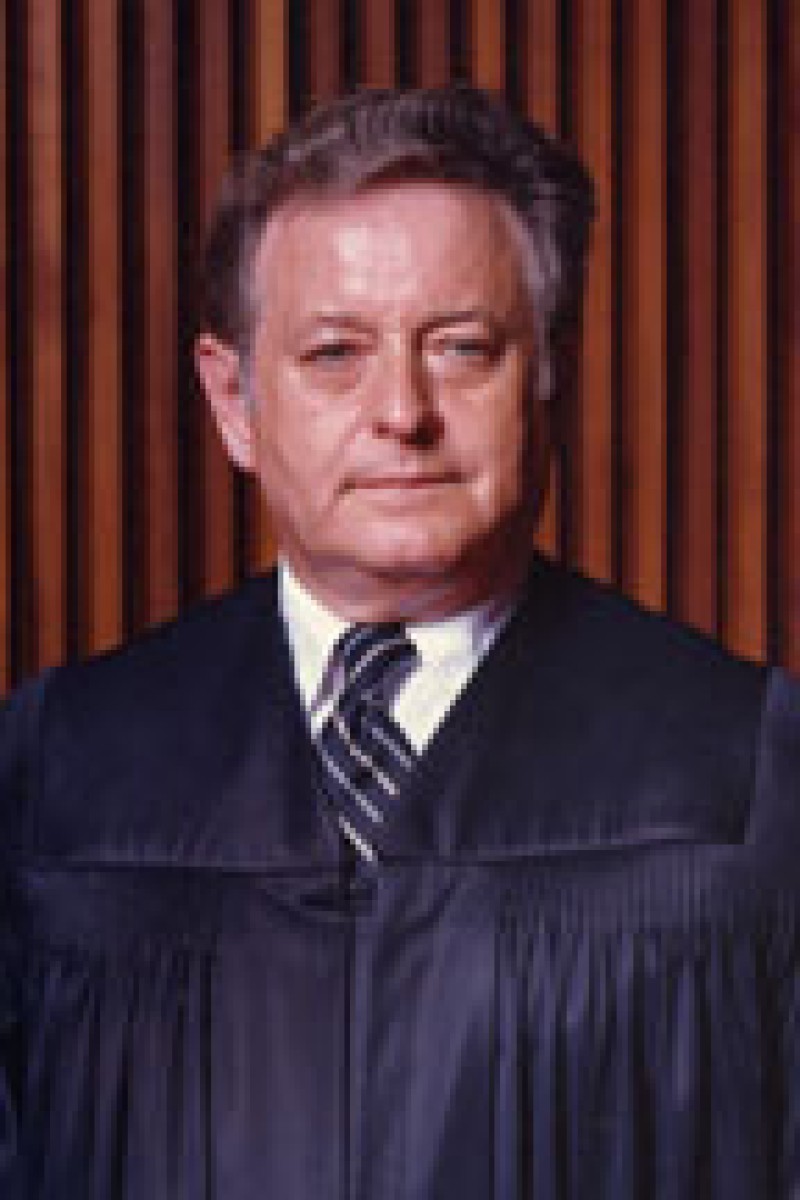Asher William Sweeney
Justice Asher William Sweeney unwillingly retired from the Supreme Court of Ohio in 1994. “I hate to leave,” he stated, “but even Shirley Temple had to leave the Good Ship Lollipop, and it’s been a wonderful trip.” He continued to serve the public in other capacities. “His entire life was in public service,” said his son, Randall Sweeney.
Sweeney was born in Canfield on Dec. 11, 1920 to Walter W. and Jessie Kidd Sweeney. He held jobs in Youngstown steel mills while attending Youngstown State University. He entered military service in 1942 in the infantry and served in the South Pacific theater, rising to the rank of lieutenant at the time of his discharge.
In 1948, he earned his law degree from Duke University and was admitted to the Ohio bar in 1949. Sweeney then worked for Republic Steel in Youngstown in the industrial relations department until 1951, when he returned to active duty in the Army. He fought with the 7th Infantry Division in Korea, where he was awarded the Bronze and Silver Stars for meritorious service.
He still was on active duty in 1958 when he made his first unsuccessful bid for the Secretary of State’s office as the Democratic candidate. Before retiring from the Army with the rank of colonel, he served as chief of the Federal Contracting Agency in Cincinnati. In 1968, President Johnson awarded Sweeney the Legion of Merit for his efforts in creating new employment and industry throughout the labor-distressed areas of Ohio by means of U.S. Government Purchasing Programs. He was a member of the U.S. Embassy in Paris from 1959 to 1960, and worked extensively for the Judge Advocate General at the Department of Defense. In 1981, Justice Sweeney was inducted into the U.S. Army Infantry Hall of Fame at Ft. Benning, Ga.
After two unsuccessful bids for lieutenant governor in 1970 and 1974, Sweeney found his place in elected office in his 1976 successful campaign for Supreme Court.
During his tenure on the Supreme Court, there were many decisions broadening liability to allow more people to be compensated for injuries, which Justice Sweeney supported, stating, “I’m very proud we’ve opened those doors.”
In 1988, Sweeney wrote the majority decision overturning all or part of three previous decisions, including one used as a precedent for 40 years which awarded workers’ compensation benefits to a woman who slipped on ice in her employer’s parking lot. Justice Sweeney cited criticisms of the previous rulings, saying compensation should not hinge on showing employer negligence. He wrote two significant decisions in the early 1990s affecting all workers in Ohio; Brady v. Safety-Kleen Corp. (1991) and Sorrell et al. v. Thevenir (1994) declared unconstitutional several of the laws restricting tort claims for work place injuries. He also upheld several last-minute death sentence commutations during Gov. Richard Celeste’s administration.
Sweeney was forced to retire in 1994, due to the legal age limit on Justices campaigning for election or re-election. He continued his life of public service as an appointed commissioner for the Ohio Court of Claims, where he administered the Victims of Crime Compensation Fund.
Sweeney married Bertha Marie Englert of Salem in 1945 and they had four children. Justice Sweeney died Dec. 28, 2003 at Jewish Hospital in Cincinnati. He is buried with his wife in Salem Grandview Cemetery in Salem.

132nd Justice of the Supreme Court of Ohio
TERM
Jan 1, 1977
to Dec 31, 1994
